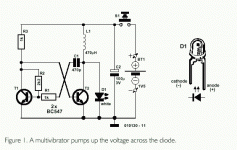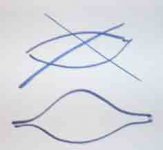5*5*10 is not small. You can get projectors in this size range. The other issue is weight. You have to get rid of 200 watts and unlike a bulb, you must keep it quite cool. That means lots of airflow and possible just as much noise as with a bulb. The LEDS will actually put out more heat today than a bulb. The advantage is all the heat goes into the heat sink and the actual light output is cool without IR. The other issue is weight. That could be a pretty heavy heat sink to get rid of 200 watts.
Just some more thoughts. I could see less than $20 in volume by the time you hit production. Realistically, you want to go with die to get the thing really small and use Polycrystalline LCD for small size or even better, DMD.
Just some more thoughts. I could see less than $20 in volume by the time you hit production. Realistically, you want to go with die to get the thing really small and use Polycrystalline LCD for small size or even better, DMD.
die thing? You mean where they would put multiple emitters on the same board during manufacturing?
--Clint
--Clint
I was thinking to have a commercially viable LED light source, you would need to buy bare die and package it yourself in order to achieve the efficiency that is desired.
Alvaius
Alvaius
Ah.
I just haven't found any LED light sources with those kind of specs. The only ones that provide anywhere near the right amount of light output are the luxeon emitters. Maybe if you packed normal LED's *REALLY* close together, but then you wouldn't have the individual focusing optics that the emitters come with.
--Clint
I just haven't found any LED light sources with those kind of specs. The only ones that provide anywhere near the right amount of light output are the luxeon emitters. Maybe if you packed normal LED's *REALLY* close together, but then you wouldn't have the individual focusing optics that the emitters come with.
--Clint
Had some success
I've had some success using LEDs as a light source for projection. They work well with projecting smaller panels (~2" range), but not much over that. I've even been successful using one single standard white LED as the light source, albeit a dim image, but it worked. With a single Luxeon Star/o and a 2.5" LCD panel, I was able to get a decent watchable picture at ~30" screen size. They key is having a good condensing system between the bulb and the panel. Now these obviously aren't ideal for trying to project a 100" image, you'd need much more brightness for that. But definitely good for projecting smaller sizes.
I've had some success using LEDs as a light source for projection. They work well with projecting smaller panels (~2" range), but not much over that. I've even been successful using one single standard white LED as the light source, albeit a dim image, but it worked. With a single Luxeon Star/o and a 2.5" LCD panel, I was able to get a decent watchable picture at ~30" screen size. They key is having a good condensing system between the bulb and the panel. Now these obviously aren't ideal for trying to project a 100" image, you'd need much more brightness for that. But definitely good for projecting smaller sizes.
Great news! Thanks!
By good condensing optics, how do you get that? Is that anti-fresnel or just good quality lenses, albeit fresnels or standard lenses?
I'm extremely interested in hearing this out. 🙂
Thanks!
--Clint
By good condensing optics, how do you get that? Is that anti-fresnel or just good quality lenses, albeit fresnels or standard lenses?
I'm extremely interested in hearing this out. 🙂
Thanks!
--Clint
Clint,
Aspheric condenser lenses seem to work well. They're usually a thick curved lens, found mostly in slide projectors and some older OHPs. They magnify the light source and then condense it to form a cone, which then floods the projection lens with light. It seems to work well with just a single LED. Obviously the brighter the LED, the better (in my case the Luxeon Star/O).
-Alan
Aspheric condenser lenses seem to work well. They're usually a thick curved lens, found mostly in slide projectors and some older OHPs. They magnify the light source and then condense it to form a cone, which then floods the projection lens with light. It seems to work well with just a single LED. Obviously the brighter the LED, the better (in my case the Luxeon Star/O).
-Alan
Just an FYI, but in case people did not realize it, the Luxeon STAR/O is just an emitter with collimating optics on the top. Otherwise it is exactly the same and hence the total lumens output will be similar minus some loses in the STAR/O.
The important thing to note about the Luxeon vs. regular white LEDs is that it's much brighter. The collimating optics simply take the wide (110 degree) angle and make it about 20 degrees I believe. Combined with a condenser, it makes for a nice bright point source light.
Aspheric condenser lens... are they different than normal lenses with focal points? Or is "aspheric condenser" just a fancy name for a convex lens?
While I'm at it, what exactly does a projection lens do? Are they easy to build yourself if you need a large one? Or are there focusing/zoom optics built in that makes it better just to buy a pre-built lens?
Thanks!
--Clint
While I'm at it, what exactly does a projection lens do? Are they easy to build yourself if you need a large one? Or are there focusing/zoom optics built in that makes it better just to buy a pre-built lens?
Thanks!
--Clint
Not really sure what the aspheric means, but they are really just a thick double convex lens. One side is almost (not quite) flat, and the other is curved.
Nothing real fancy about a projection lens. Any plano convex lens will serve as a projection lens. For my 2.5" panel, I use 2 75mm PCX lenses as the 'projection lens'.
Nothing real fancy about a projection lens. Any plano convex lens will serve as a projection lens. For my 2.5" panel, I use 2 75mm PCX lenses as the 'projection lens'.
So is the key for projection lenses just a long focal length? Well 75 mm isn't very long... short focal length? I might just buy the fujinon. 🙂
You can use White LED with 1.5 Volt Battery
Source:
Free "Miniproject" at Elektor Magazine United Kingdom UK, Website
Is available as PDF.
You can use White LED with only One 1.5 Volt Battery.
Make a Mini-Hand-Lighter!
A nice Christmas-present to your loved-one, maybe.
/halojoy at your service
Source:
Free "Miniproject" at Elektor Magazine United Kingdom UK, Website
Is available as PDF.
You can use White LED with only One 1.5 Volt Battery.
Make a Mini-Hand-Lighter!
A nice Christmas-present to your loved-one, maybe.
/halojoy at your service
Attachments
alank said:Not really sure what the aspheric means..
Aspheric is a lens which has variable "curve form", much harder to make but gives better optical performance.
Attachments
aspheric condensers
Here's a good description/pictures of aspheric condensers
http://www.edmundoptics.com/IOD/DisplayProduct.cfm?productid=2054#Technical Images
Here's a good description/pictures of aspheric condensers
http://www.edmundoptics.com/IOD/DisplayProduct.cfm?productid=2054#Technical Images
I am currently working on a design employing LEDs as the light source. I currently have an array of 100 20,000 mcd white LEDs that I collect the light from, direct through a series of optics and eventually project the single light source through a mirror that spins in a 360 degree circle at roughly 5000 RPM. I am having real trouble figuring out the lumen output with consideration for the spinning optic. I do beieve, however, that the spinning optic increases the overall lumen output by virtue of the fact that I can cover 360 degrees. Any thoughts?
Something requiring a spinning mirror is a bit... out there.
Introducing your own custom mechanical element into the picture, especially something like a high-RPM wheel, seems like unneeded complexity that you could probably do easier in some other method, and which will drastically impact the life of your PJ even with expensive precision manufacturing.
To give any more feedback than this, we need to know much, much more detailed info on how it works.
Introducing your own custom mechanical element into the picture, especially something like a high-RPM wheel, seems like unneeded complexity that you could probably do easier in some other method, and which will drastically impact the life of your PJ even with expensive precision manufacturing.
To give any more feedback than this, we need to know much, much more detailed info on how it works.
The spinning optic is being driven by a brushless DC motor that wil consume less than 10W of total power as it spins and has a guaranteed life expectancy of 30,000 hours with consideration that the spinning optic creates a load on the motor of less than 1oz/in.
I believe that the light disbursed by the optic is uniform in every direction and less total luminosity is needed because of the fact that I am spinning a very narrow, but very intense beam.
If, for instance, the output beam was 2,000,000 mcd and i swept that beam in a 360 degree circle, taking into acount the integration time of the eye, the output beam as it spins, is perceived at roughly 1/2 the intensity of the actual output beam intensity.
That being said, I believe by making this an electo-mechanical device, the LED output can be enhanced in intensity.
Thoughts?
I believe that the light disbursed by the optic is uniform in every direction and less total luminosity is needed because of the fact that I am spinning a very narrow, but very intense beam.
If, for instance, the output beam was 2,000,000 mcd and i swept that beam in a 360 degree circle, taking into acount the integration time of the eye, the output beam as it spins, is perceived at roughly 1/2 the intensity of the actual output beam intensity.
That being said, I believe by making this an electo-mechanical device, the LED output can be enhanced in intensity.
Thoughts?
- Status
- Not open for further replies.
- Home
- General Interest
- Everything Else
- The Moving Image
- Lighting and OHP
- Researching LED's as powerful light-source

